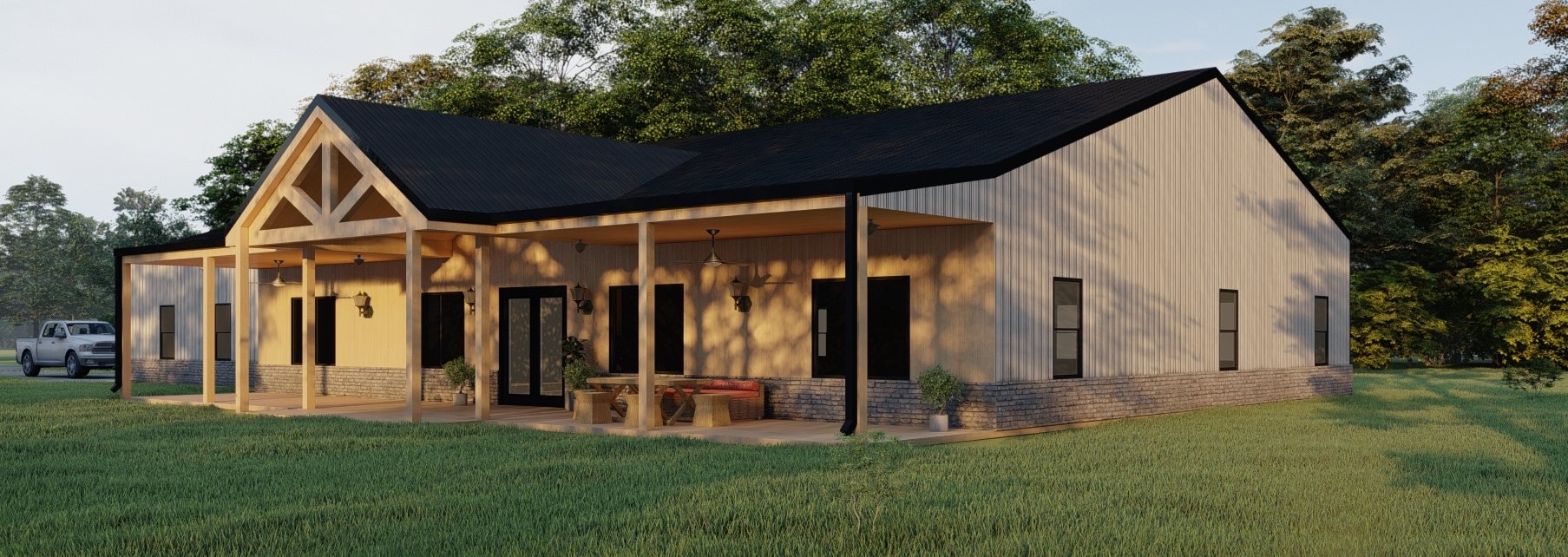Barndominium Builder: Expert Craftsmanship for Your Desire Home
Wiki Article
Barndominiums Vs. Traditional Homes: a Comprehensive Comparison of Lifestyle and Functionality
The decision between barndominiums and traditional homes encompasses different elements, including way of life preferences and useful demands. Barndominiums are defined by their open layouts and flexibility, commonly appealing to those who prioritize communal living and versatility.Review of Barndominiums
Barndominiums, a novel housing pattern getting appeal throughout various areas, mix the rustic beauty of barn-style style with the functionality of modern home. These unique structures generally include a metal or wood framework, integrating open flooring plans and high ceilings with energy-efficient functions. Typically positioned on large country buildings, barndominiums offer homeowners the opportunity to enjoy a serene way of living while giving enough room for different activities.
The adaptability of barndominiums prolongs beyond their aesthetic appeal; they can offer as both living quarters and practical areas for pastimes, workshops, or perhaps local business. Their flexible style enables easy personalization, accommodating diverse family members demands and preferences. Many proprietors value the low maintenance needs linked with steel house siding and roof, adding to long-lasting sturdiness.

Attributes of Typical Homes
Highlighting classic design and convenience, conventional homes are defined by their distinctive building styles, which usually reflect historical influences and local visual appeals. Typical attributes consist of symmetrical facades, gabled roofings, and a focus on workmanship, resulting in a warm and welcoming ambience.Traditional homes frequently integrate aspects such as crown molding, wainscoting, and wood floor covering, boosting their classic appeal. They usually include several spaces with specified objectives, advertising family interaction while enabling privacy. click here. The format often consists of official living and eating locations, which are conducive to entertaining guests and hosting family gatherings
Exterior materials such as brick, wood, or rock are frequently used, adding to resilience and a sense of permanence. Barndominium builder. Furthermore, numerous conventional homes are developed with front patios or stoops, fostering a sense of community and link with the neighborhood
Landscape design plays a substantial duty in typical home style, with well-kept yards and pathways that enhance visual charm - click here. Overall, traditional homes embody a feeling of fond memories and security, interesting those that value heritage and an extra organized living atmosphere
Expense Comparison
Usually, an expense comparison between barndominiums and conventional homes exposes considerable differences in construction expenses and overall investment. Barndominiums, typically built from metal or steel frames, usually incur reduced product and labor expenses than conventional homes built from timber and brick. The simplified layout of barndominiums can equate to reduced building and construction times, additionally reducing labor costs and accelerating occupancy.Typically, the expense per square foot for a barndominium ranges from $100 to $150, while typical homes can vary widely, commonly falling in between $150 and $300 per square foot, depending upon location, products, and design intricacy. This cost difference makes barndominiums an appealing option for budget-conscious purchasers seeking bigger living areas without giving up high quality.
In addition, barndominiums may lead to lasting savings with lower upkeep costs, power efficiency, and insurance policy rates. Their sturdy construction products frequently call for less upkeep with time compared to standard homes. It is essential to think about that while first prices may be reduced for barndominiums, the last financial investment will likewise depend on individual customization and preferred features, which can influence the general expenditure in both housing types.
Way Of Life and Area Factors To Consider
When taking into consideration lifestyle and space, barndominiums use an one-of-a-kind adaptability that attract a variety of property owners. These hybrid frameworks integrate property coping with useful space, frequently featuring open layout that can be adapted to suit individual requirements. This versatility is especially useful for family members or people looking for a personalized living environment, allowing for diverse uses such as home offices, workshops, or entertainment locations.
Additionally, the visual allure of barndominiums can accommodate both rustic and contemporary preferences, making them a flexible choice for various layout choices (Barndominium builder). Ultimately, the selection between a barndominium and a conventional home frequently rests on exactly how well each option aligns with the home owner's way of life desires and spatial demands, highlighting the importance of thinking about personal top priorities in the decision-making process
Ecological Impact and Sustainability
The ecological impact and sustainability of barndominiums existing engaging advantages contrasted to traditional homes. Largely constructed from steel and other sturdy materials, barndominiums are commonly built using recycled sources, reducing the demand for new products and minimizing waste. Their design typically emphasizes open areas, which can bring about reduced energy consumption for heating and cooling compared to standard homes with even more fractional formats.Moreover, barndominiums can integrate sustainable functions such as photovoltaic panels, rain harvesting systems, and progressed insulation strategies, boosting their power efficiency. The flexibility of their style enables home owners to incorporate these technologies much more flawlessly than in several traditional homes, which may require comprehensive retrofitting.
Additionally, barndominiums usually require less sources for building due to their easier, more reliable styles (learn more). Overall, barndominiums stand for a forward-thinking technique to sustainable living, aligning with modern ecological priorities.
Conclusion
In summary, the selection between barndominiums and standard homes hinges on private lifestyle preferences and useful demands. Barndominiums, with their open layouts and sustainable materials, cater to those looking for flexibility and public living.Report this wiki page